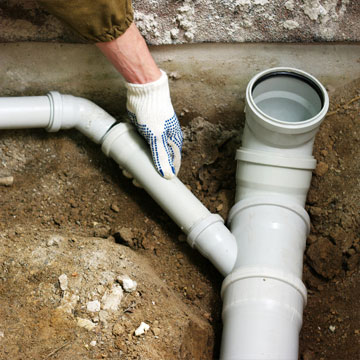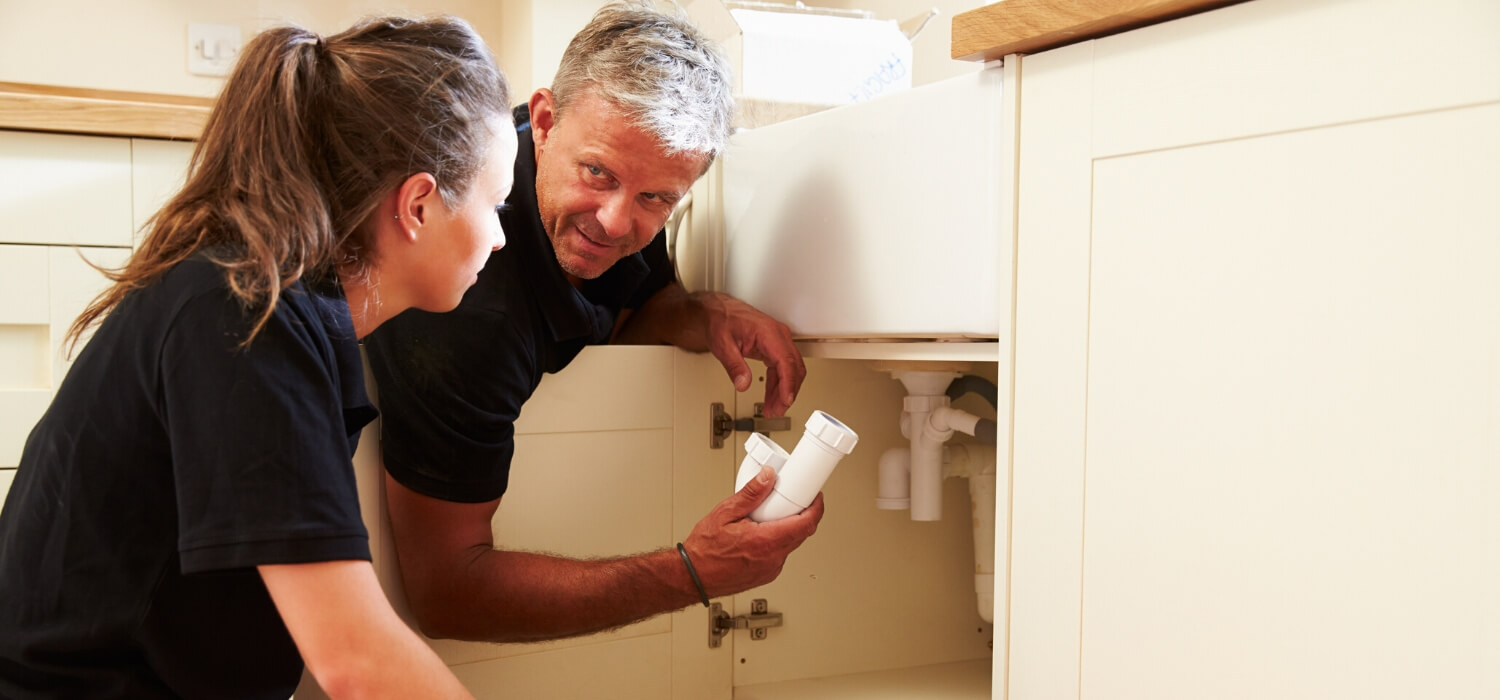The Layout of Your House's Plumbing System Explained
The Layout of Your House's Plumbing System Explained
Blog Article
The writer is making a few good pointers regarding Understanding Your Home's Plumbing Anatomy in general in this content down the page.

Recognizing exactly how your home's plumbing system works is essential for every single property owner. From providing clean water for drinking, cooking, and showering to securely eliminating wastewater, a well-maintained plumbing system is crucial for your household's health and wellness and comfort. In this extensive overview, we'll discover the detailed network that comprises your home's plumbing and deal pointers on upkeep, upgrades, and dealing with usual concerns.
Introduction
Your home's pipes system is greater than simply a network of pipes; it's a complex system that ensures you have access to tidy water and effective wastewater removal. Knowing its parts and exactly how they work together can aid you stop costly fixings and guarantee every little thing runs smoothly.
Standard Parts of a Plumbing System
Pipelines and Tubing
At the heart of your plumbing system are the pipelines and tubing that lug water throughout your home. These can be constructed from different products such as copper, PVC, or PEX, each with its benefits in terms of durability and cost-effectiveness.
Components: Sinks, Toilets, Showers, etc.
Fixtures like sinks, commodes, showers, and tubs are where water is used in your house. Understanding just how these fixtures connect to the pipes system helps in detecting problems and intending upgrades.
Valves and Shut-off Factors
Shutoffs control the circulation of water in your plumbing system. Shut-off shutoffs are important throughout emergency situations or when you need to make repair services, allowing you to separate parts of the system without interfering with water flow to the whole home.
Water System
Main Water Line
The major water line links your home to the metropolitan water supply or an exclusive well. It's where water enters your home and is distributed to various components.
Water Meter and Pressure Regulatory Authority
The water meter procedures your water use, while a stress regulator ensures that water streams at a safe stress throughout your home's plumbing system, protecting against damage to pipelines and fixtures.
Cold Water vs. Warm water Lines
Understanding the difference between cold water lines, which provide water straight from the main, and warm water lines, which carry warmed water from the water heater, aids in fixing and preparing for upgrades.
Drain System
Drain Pipes Water Lines and Traps
Drain pipes bring wastewater away from sinks, showers, and toilets to the sewage system or sewage-disposal tank. Catches avoid sewage system gases from entering your home and likewise catch debris that can cause obstructions.
Ventilation Pipes
Air flow pipes enable air into the drain system, preventing suction that might reduce drainage and create traps to vacant. Proper air flow is important for keeping the integrity of your plumbing system.
Value of Proper Drain
Making sure appropriate drainage prevents backups and water damages. Routinely cleaning drains pipes and keeping traps can stop pricey repairs and prolong the life of your pipes system.
Water Furnace
Types of Water Heaters
Hot water heater can be tankless or typical tank-style. Tankless heaters heat water on demand, while storage tanks keep warmed water for immediate use.
Exactly How Water Heaters Attach to the Plumbing System
Understanding exactly how hot water heater attach to both the cold water supply and hot water circulation lines helps in identifying concerns like insufficient hot water or leaks.
Upkeep Tips for Water Heaters
Frequently flushing your hot water heater to get rid of debris, checking the temperature setups, and inspecting for leaks can extend its life expectancy and enhance power performance.
Usual Pipes Issues
Leaks and Their Causes
Leaks can occur because of aging pipes, loose fittings, or high water stress. Attending to leakages without delay protects against water damages and mold and mildew development.
Clogs and Blockages
Blockages in drains and bathrooms are typically triggered by flushing non-flushable products or an accumulation of oil and hair. Utilizing drain screens and being mindful of what drops your drains pipes can stop blockages.
Indications of Plumbing Issues to Look For
Low water pressure, slow drains, foul odors, or uncommonly high water expenses are indications of prospective plumbing problems that should be resolved without delay.
Pipes Upkeep Tips
Regular Inspections and Checks
Set up yearly pipes evaluations to catch issues early. Look for indicators of leaks, corrosion, or mineral build-up in taps and showerheads.
DIY Maintenance Tasks
Simple jobs like cleansing faucet aerators, checking for commode leakages utilizing dye tablet computers, or shielding subjected pipes in cool climates can protect against significant plumbing concerns.
When to Call a Specialist Plumbing Technician
Know when a plumbing concern requires expert knowledge. Attempting intricate repair services without proper expertise can cause more damages and greater repair work prices.
Updating Your Plumbing System
Factors for Upgrading
Updating to water-efficient components or replacing old pipelines can boost water high quality, reduce water costs, and enhance the value of your home.
Modern Pipes Technologies and Their Benefits
Discover innovations like clever leak detectors, water-saving commodes, and energy-efficient water heaters that can conserve money and minimize environmental influence.
Cost Considerations and ROI
Calculate the in advance costs versus long-lasting savings when considering plumbing upgrades. Numerous upgrades pay for themselves with lowered energy expenses and less repair work.
Ecological Impact and Conservation
Water-Saving Components and Appliances
Mounting low-flow faucets, showerheads, and bathrooms can significantly minimize water use without sacrificing performance.
Tips for Minimizing Water Use
Easy behaviors like repairing leakages promptly, taking shorter showers, and running full tons of washing and recipes can conserve water and reduced your energy bills.
Eco-Friendly Pipes Options
Take into consideration sustainable plumbing products like bamboo for flooring, which is durable and eco-friendly, or recycled glass for countertops.
Emergency situation Readiness
Steps to Take During a Pipes Emergency situation
Know where your shut-off valves lie and just how to turn off the water system in case of a ruptured pipeline or significant leak.
Significance of Having Emergency Calls Convenient
Keep get in touch with info for regional plumbing professionals or emergency solutions conveniently offered for fast reaction during a plumbing crisis.
Do It Yourself Emergency Situation Fixes (When Suitable).
Short-lived solutions like making use of air duct tape to patch a dripping pipeline or putting a container under a dripping faucet can reduce damage until an expert plumbing technician shows up.
Final thought.
Comprehending the makeup of your home's plumbing system equips you to preserve it successfully, conserving money and time on fixings. By complying with regular maintenance routines and staying informed about modern pipes modern technologies, you can guarantee your pipes system runs effectively for many years to come.
HOW YOUR PLUMBING SYSTEM WORKS
Which Pipes Do What?
Blue lines = fresh water supply entering the building
Red lines = hot water supply entering the building
Grey lines = pipes carrying waste away from the building and venting pipes carrying gases away from the building (through the roof)
YOUR MAIN PLUMBING SYSTEMS
There are two main plumbing systems that support your home s basic plumbing needs one that brings clean water into your home, and one that sends dirty water away from your home. Connected to the toilet, bath, shower, and other faucets in your home, these two systems keep your water flowing in the right directions.
ACCESSING FRESH WATER
Fresh and clean water is brought into your home through the main water supply line . Filtered through one pipe, this water is pressured to flow into the various fixtures in your home at any given time.
This water can be sourced from a well located on your property, a pond or river (mostly cottages), or, as in most cases, from the city s municipal water treatment centre. However, it is important to note that water that is untreated, such as the water siphoned from ponds or rivers, may not be safe to drink. Personal water supplies always need to be treated for hardness and contaminants before consumed.
MUNICIPAL WATER SUPPLIES
Improve taste and odour
Remove sediment
Eliminate hardness
Reduce chlorine
COLD WATER SUPPLY VS. HOT WATER SUPPLY
Cold water flows into your home or building through the service line, which then distributes hot or cold water to your fixtures. This line is most commonly run through a central column that runs floor to floor. Hot water runs in short and straight pipes as the longer the pipeline, the more heat that will be lost in the transfer. Having shorter pipes also allows residents to access hot water more quickly.
WASTE WATER SYSTEM
Your wastewater system is divided into two parts pipes that send wastewater away from your home and venting pipes that send sewer gas away from your home. Sewage water travels through pipes that flush the water and waste towards local sewers that are operated and managed by your city or town. Most sewer systems rely on gravity to move the wastewater to where it needs to go.
The further away from your toilet or sink, the larger wastewater pipes become. This allows for waste to be disposed of from various parts of your home or business at once without pipe blockages. The angle and flow of these pipes are also essential for keeping your waste pipes clear of build up.
https://harrisplumbing.ca/how-your-home-plumbing-system-works/

HOW YOUR PLUMBING SYSTEM WORKS
Which Pipes Do What?
YOUR MAIN PLUMBING SYSTEMS
There are two main plumbing systems that support your home s basic plumbing needs one that brings clean water into your home, and one that sends dirty water away from your home. Connected to the toilet, bath, shower, and other faucets in your home, these two systems keep your water flowing in the right directions.
ACCESSING FRESH WATER
Fresh and clean water is brought into your home through the main water supply line . Filtered through one pipe, this water is pressured to flow into the various fixtures in your home at any given time.
This water can be sourced from a well located on your property, a pond or river (mostly cottages), or, as in most cases, from the city s municipal water treatment centre. However, it is important to note that water that is untreated, such as the water siphoned from ponds or rivers, may not be safe to drink. Personal water supplies always need to be treated for hardness and contaminants before consumed.
MUNICIPAL WATER SUPPLIES
COLD WATER SUPPLY VS. HOT WATER SUPPLY
Cold water flows into your home or building through the service line, which then distributes hot or cold water to your fixtures. This line is most commonly run through a central column that runs floor to floor. Hot water runs in short and straight pipes as the longer the pipeline, the more heat that will be lost in the transfer. Having shorter pipes also allows residents to access hot water more quickly.
WASTE WATER SYSTEM
Your wastewater system is divided into two parts pipes that send wastewater away from your home and venting pipes that send sewer gas away from your home. Sewage water travels through pipes that flush the water and waste towards local sewers that are operated and managed by your city or town. Most sewer systems rely on gravity to move the wastewater to where it needs to go.
The further away from your toilet or sink, the larger wastewater pipes become. This allows for waste to be disposed of from various parts of your home or business at once without pipe blockages. The angle and flow of these pipes are also essential for keeping your waste pipes clear of build up.
https://harrisplumbing.ca/how-your-home-plumbing-system-works/
We were made aware of that write-up about through someone on our other web address. For those who enjoyed reading our blog posting please be sure to share it. Thank you so much for your time spent reading it.
Book Report this page